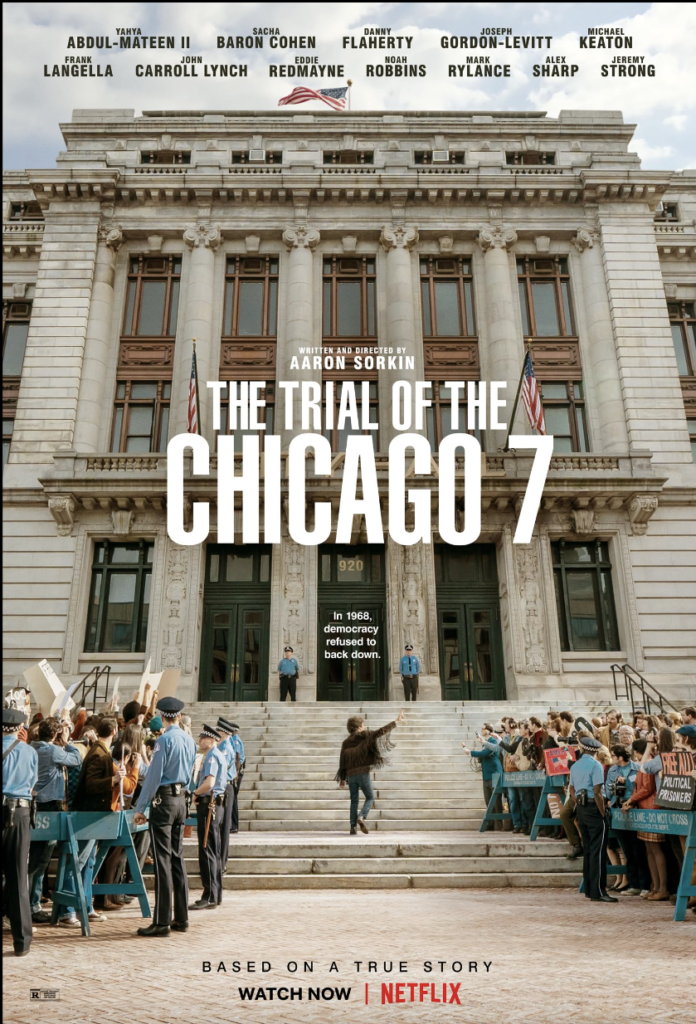
The Trial of the Chicago 7 is a Netflix film that covers the trial of anti-Vietnam War protestors who allegedly crossed state lines to incite a riot and commit criminal conspiracy. During the Democratic National Convention (DNC) in Chicago, the 7 led a protest that evolved into a clash between law enforcement and protesters downtown. The 7 were members of Students for a Democratic Society (SDS), Youth International Party, or the Black Panther Party, which are progressive activist organizations. The trial itself lasted a long five months and included many strongly biased decisions from Judge Julius Hoffman to the dismay of the defendants. In the end, all but two defendants were found guilty of interstate travel to incite a riot. During the appeals process, the charges were dropped, and the case was never retried.
Although acts of nonviolence were not at the center of the film, the goals, strategies, and tactics of the defendants could be seen in powerful ways. The 7 went to Chicago with the goal of bringing attention to the seemingly endless war in Vietnam and the need to bring the military involvement to an end. While their strategies were sometimes unclear, it is likely that some members went for a protest at the DNC where there was guaranteed audiences and news coverage. Some may have attended with the intention of brining violence to the forces they would be met with.
Some of the protester’s tactics included deflating police tires, holding a festival in Chicago, although a permit was never given, and moving a protest to the convention center. While not necessarily constructive tactics, they were strategic in showing their willingness to disrupt and their ability to assemble a crowd. I am not sure if they achieved their goal successfully since the clash with law enforcement likely impacted their support, but the following trial may have served as an opportunity to regain some of that support. The strategy seemed to be gaining attention and allowing the public to learn about the impacts and need to end the war. I believe they were able to spread awareness about ending the war, but I am unsure that they achieved any substantial change.
One of the most notable and powerful tactics came at the very end when the defendant, Tom Hayden read the names of all the United States soldiers that were killed in the Vietnam War. This went against the wishes of the judge, who was allowing for a concise statement before the sentencing occurred. The reading of these names became the most powerful act of nonviolence in the film, since it reiterated the underlying cause of the protests and the trial. Furthermore, this act caused the prosecution team to fracture due to the power of recognizing all the victims of the war and what it represents.